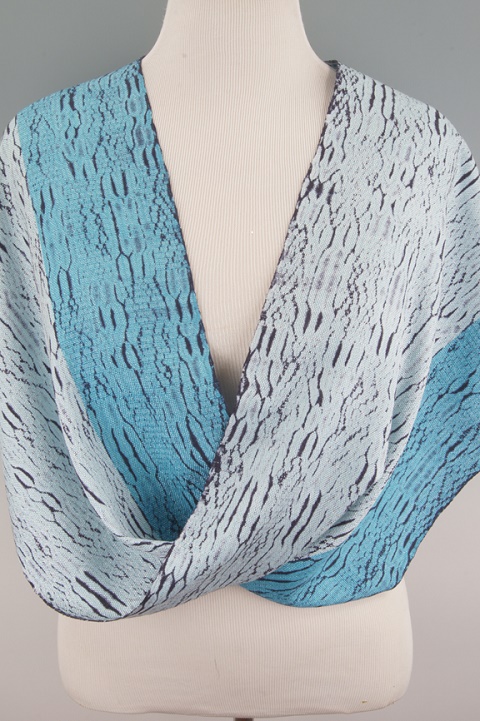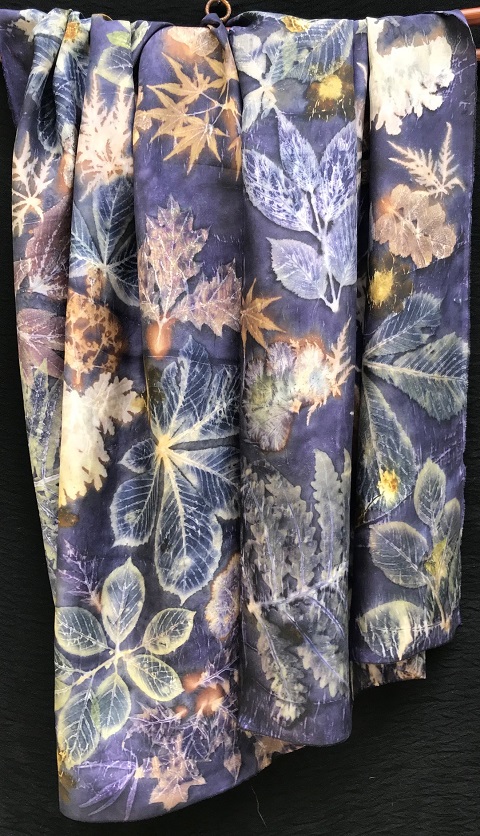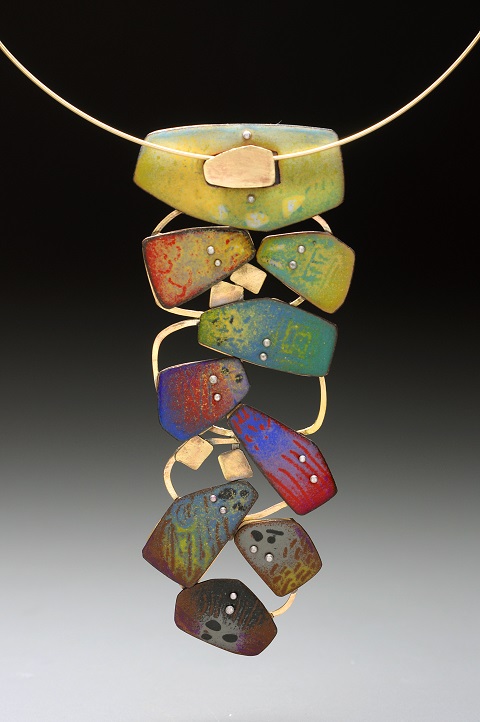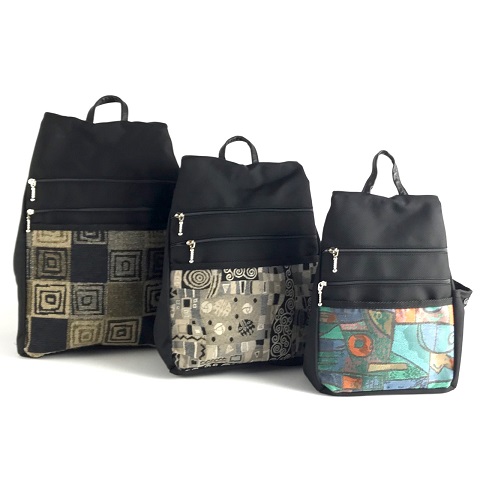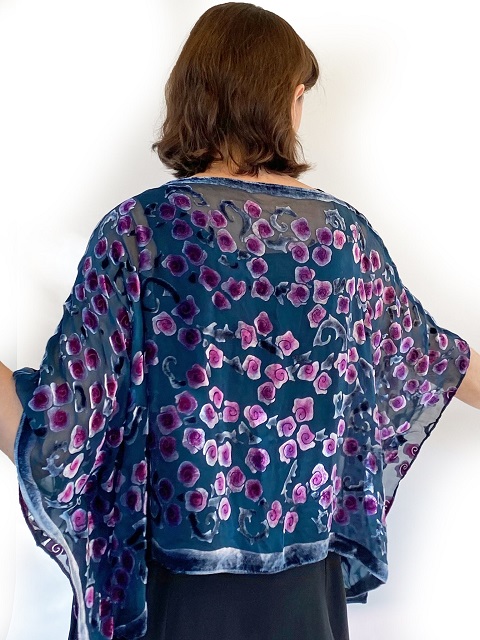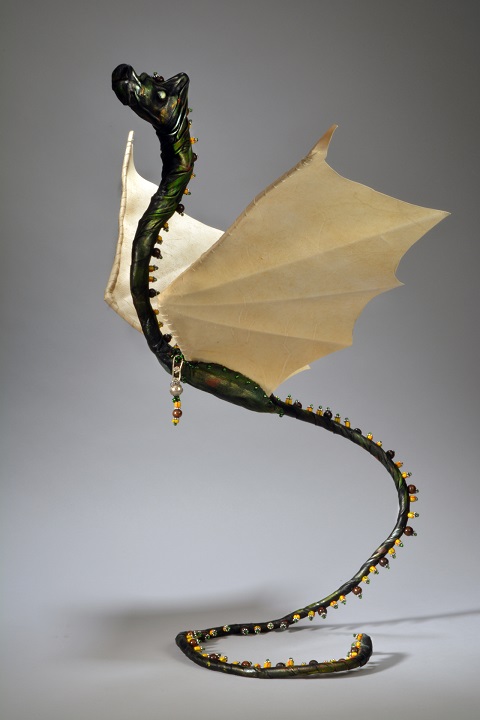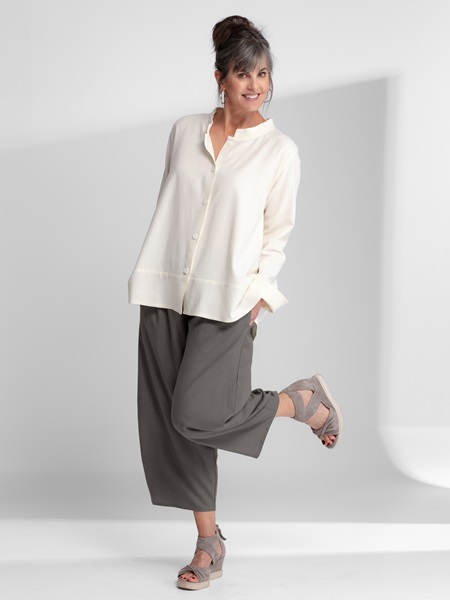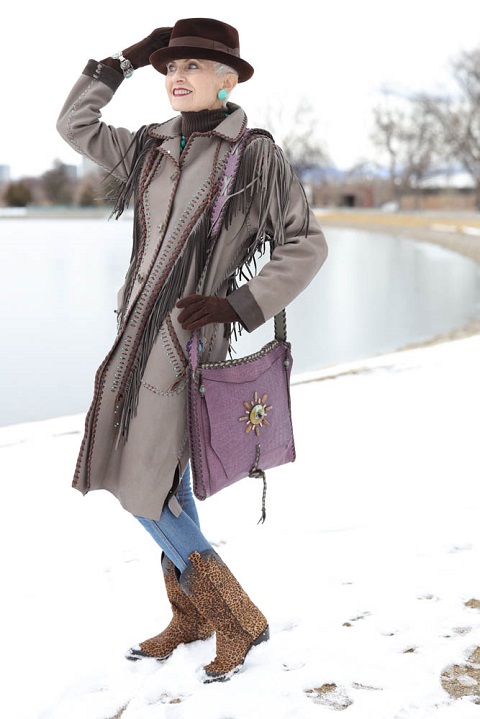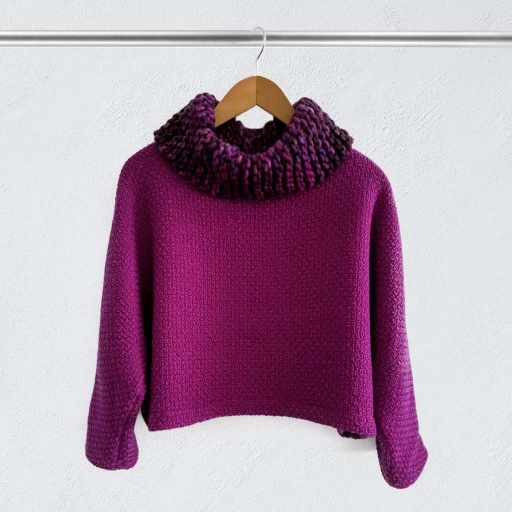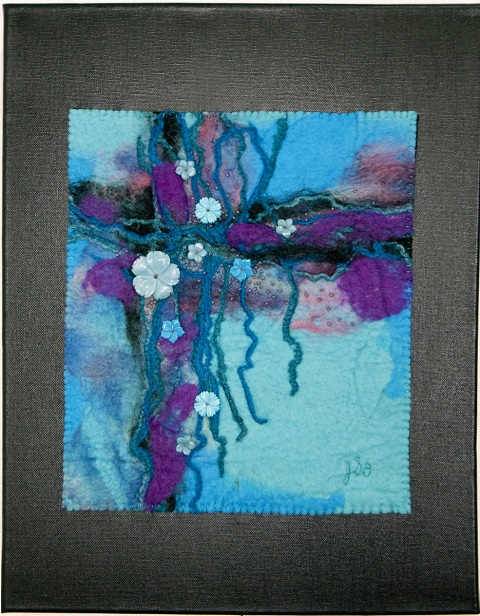What’s Cooking? A Stitch in Time!
First, a brief history of the thread of time. Let’s go back 11,000 years. That’s about when humans began to weave cloth and stitch it together. If you look further into the past – more than 25,000 years ago – needles with eyes were carved out of bone and used to sew skins and furs. Today, sewing is a pretty indispensable skill for more artists and makers than you think.
So maybe the question is “How many artists can you fit through the eye of a needle?” In this Marketplace collection, we’ll take a look at the myriad ways that Paradise City’s artists stitch their way into your heart. Fashion is the most obvious, and surprisingly easy to order online. Most handmade clothing, whether fabric, handweaving, or leather, is easy-fitting and designed to flatter the body. With accessories, like scarves and handbags, you just have to decide on style and color.
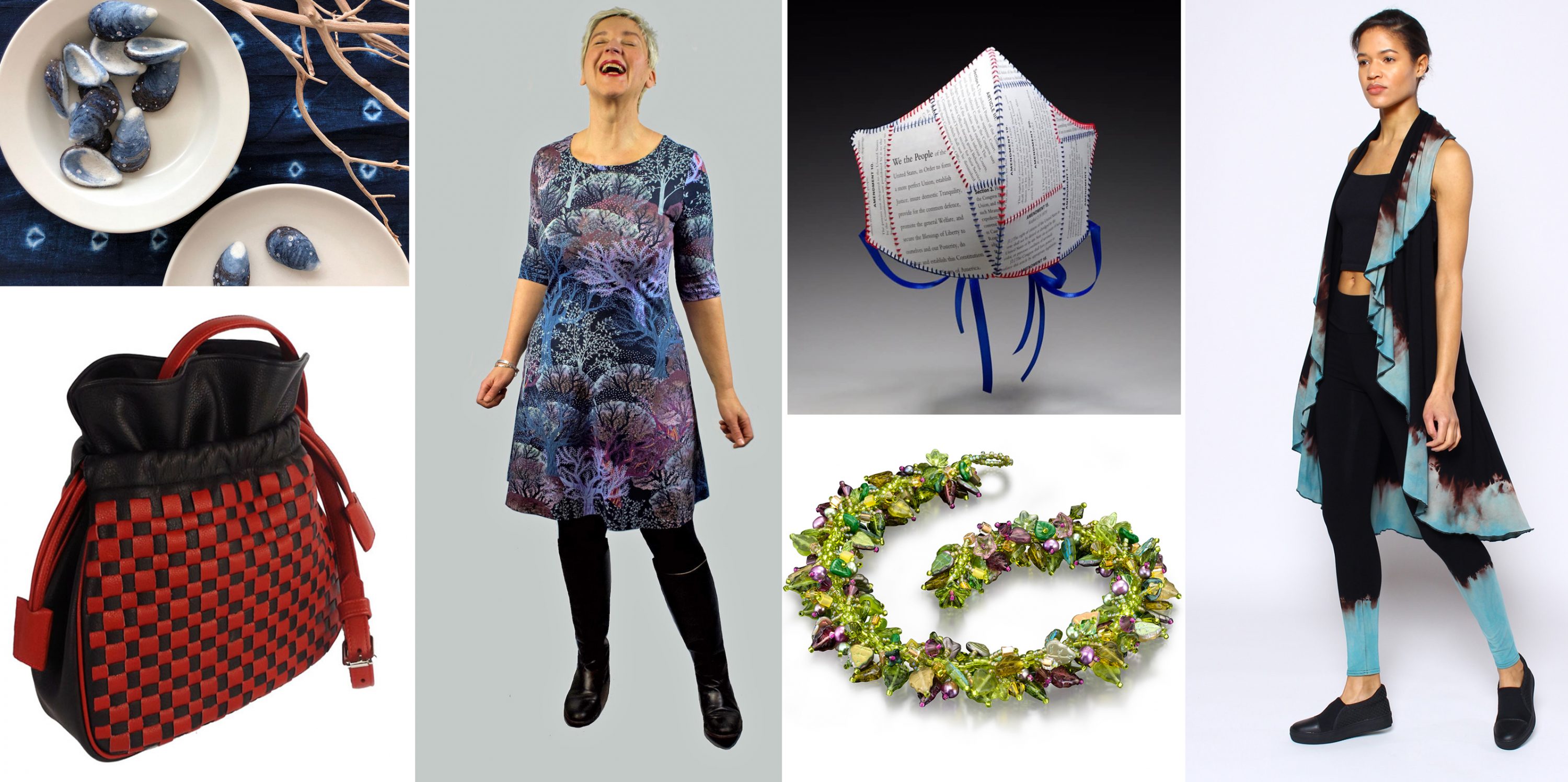
clockwise: Michelle Provencal; Sharon London; Karen Krieger; Maura Cronin; Wendy Lin; David Meshberg
But if we delve beneath the surface, we see an undiscovered world of stitchery. Jewelers employ needles in intricate beading or sewing cut metal pieces or found objects together. Artists create evocative wall pieces and sculpture out of fabric, felt, leather and thread, often weaving in beads, glass, dried plants, shells, or handmade paper.
Michelle Provencal is an amazing needle-felter, and her hyper-realistic mussel shells are made of wool and embellished with sequin drops of water and stitched-on pearls. Sharon London fashions soft, stretchy, hand-printed dresses that are easy to love, and Maura Cronin brings tie-dye into the 21st century. This intricately beaded “Green Leaf Necklace” by Wendy Lin is surprisingly soft and supple around your neck. David Meshberg’s leather handbags include details like box weaving, suede linings and cell phone compartments.
We can’t write about stitchery without mentioning masks. Many of our fiber artists have turned their studios into mask-making workshops to service their communities, and we all are grateful for their efforts and generosity. Taking mask-making in a new direction, mixed media artist Karen Krieger created “Life Support”, pictured above, a paper mask constructed and stitched from the ACLU pocket version of the US Constitution, archival paper substructure, and embroidery floss. Her entry won Second Place in “Let’s Face It”, an exhibition of artists’ masks at the Museum of Craft and Design in San Francisco.
What else is cooking at Paradise City? It’s the hazy, lazy, crazy days of summer. Our recipe for Watermelon and Feta Salad is just what you want – cool, sweet, salty, crunchy and sharp.
Featured Artists
This Week’s Recipe
When the watermelon is sweet and the summer is hot, try this eye-catching, unusual and refreshing salad. We find that it makes a perfect appetizer this time of year, especially accompanied by an ice-cold Vesper.
Watermelon and Feta Salad
For each serving:
Seedless watermelon, rind removed, about 3” x 4” x 1”, cut into a decorative shape or rectangle
Chopped pistachio nuts, at least a tablespoon
2 oz feta cheese, cut into a rectangle
Handful of arugula
5 to 10 fresh mint leaves, depending on size
Aged balsamic vinegar and good olive oil
Salt and pepper to taste
- Bake the feta cheese until it’s quite warm but not melted.
- Place the arugula on a plate and sprinkle lightly with oil, vinegar, salt and pepper.
- Coat the watermelon in the pistachio nuts.
- Lay the watermelon and feta cheese side by side on the greens. Drizzle with a little more oil and vinegar. Scatter the mint leaves on top and serve.
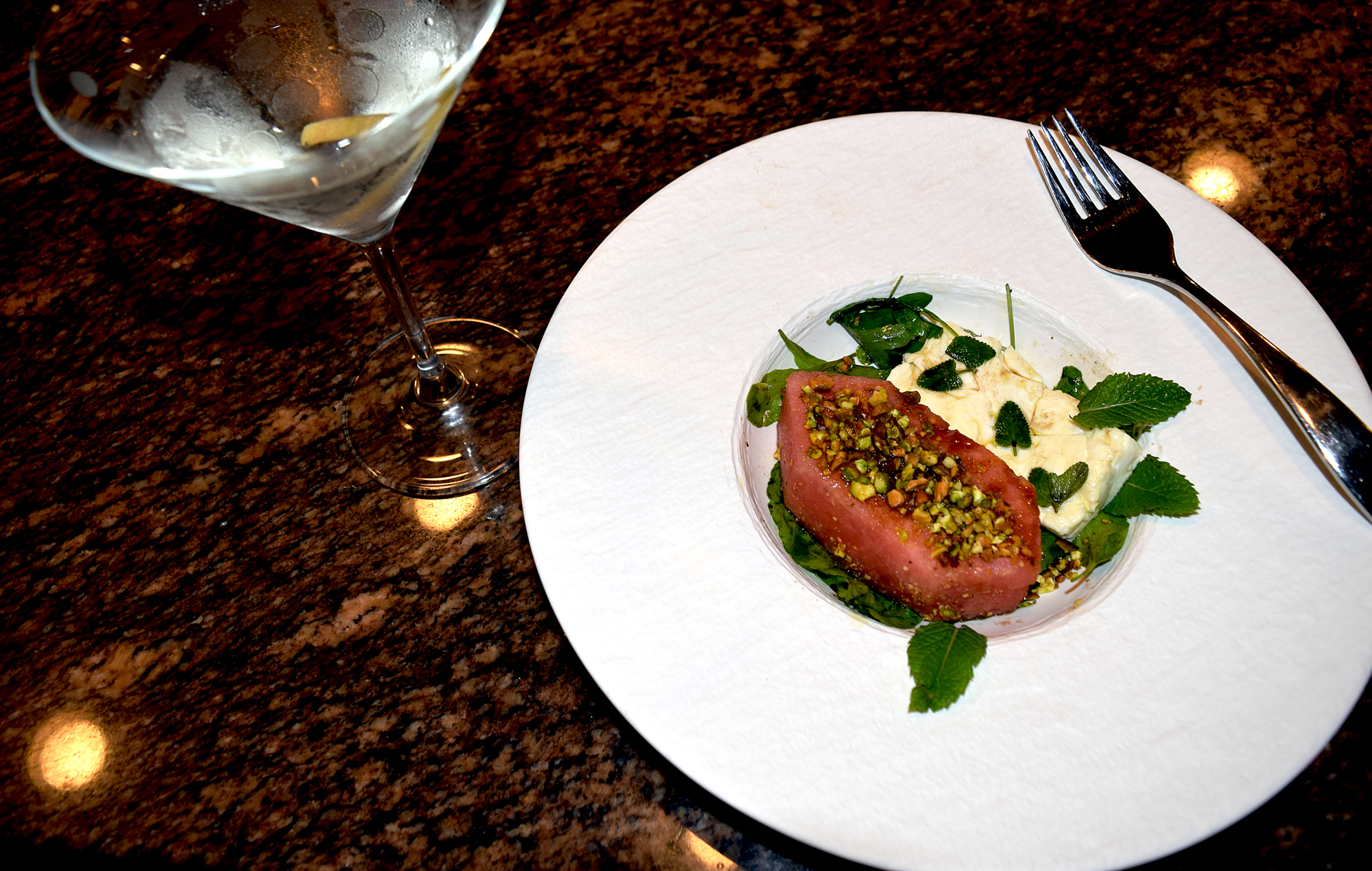
To make a Vesper:
1½ oz your favorite vodka
1½ oz your favorite gin
½ oz Lillet (a light French aperitif wine)
Twist of lemon peel
Place the lemon peel in a martini glass. In a shaker with ice, pour the rest of the ingredients. Let sit to chill for a few minutes, then shake well and serve.
